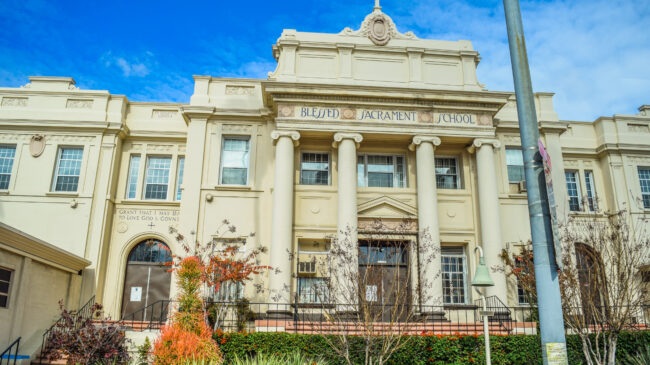The federal government has allocated nearly $200 billion in relief funds to K-12 education since the start of the COVID-19 pandemic and the proposed $3.5 trillion reconciliation bill in Congress could eventually send another $700 billion in education dollars to states.
This money is on top of the routine federal funds for K-12 education, which are largely allocated for low-income and special needs students. That federal funding totaled $40.6 billion for the 2021-2022 school year. Federal law says that private schools serving disadvantaged students should receive some of that funding, but they don’t always get it.
For example, according to documents Angelus News says it obtained but did not post publicly, this summer the California Department of Education told the Los Angeles Unified School District (LAUSD) that it violated federal law by withholding millions from students at local Catholic schools. LAUSD buried local Catholic schools in paperwork and made changes to reporting requirements that unfairly cut out previously eligible schools.
Consequentially, the number of Los Angeles Catholic schools eligible for federal Title I funds was reduced from 102 to 17 in 2019, the report claimed. The state reportedly ordered LAUSD to, “Provide the agreed-upon services to eligible archdiocesan students beginning by the start of the 2021-2022 school year,” according to Angelus News.
This egregious case of private school students missing out on funds they are entitled to isn’t an isolated incident. Oftentimes, eligible private schools are either unaware that they qualify for federal services or they can’t jump through the bureaucratic hoops required to get the money. As a result, disadvantaged students in private schools are often shortchanged.
The consequences of private schools not getting their fair share of available dollars have been exacerbated during the COVID-19 pandemic. Many of them missed out on Coronavirus Aid, Relief, and Economic Security (CARES) Act funding and have been further limited in their ability to use Emergency Assistance to Non-Public Schools funds due to restrictions Congress placed on those dollars.
A look at the federal guidelines for how federal K-12 dollars should be shared with private schools also reveals why disadvantaged students at private schools can so easily be overlooked. The guidelines impose substantial administrative burdens on school districts by requiring them to consult with private schools to make service plans, hire contractors to provide the services, determine if students are at risk of falling behind academically, and many other items.
California school districts have a hard enough time complying with similar guidelines for their own public-school students, let alone students at private schools. Other states struggle with this problem too.
A 2018 survey by the Badger Institute, a Wisconsin-based think-tank, found about 62 percent of private school principals “felt that federal regulations sometimes prevent their students from receiving services they need in the way they desire.”
Laura Colangelo, executive director of the Texas Private Schools Association, says public school districts can do a poor job of cooperating with eligible private schools without actually violating federal law. “There are many ways for districts to be difficult,” she told me in an interview. “You can follow the letter of the law but still make things unpleasant for private schools.”
Beyond uncooperative school districts, federal policy is also to blame when disadvantaged students at private schools don’t receive the federal funds meant for them. Since the 1960s, federal programs for K-12 education have been riddled with restrictions and compliance requirements that often make it hard for the dollars to benefit the students they are intended to serve at both public and private schools.
Federal dollars only amount to 8.5 percent of K-12 funding in California, with state and local taxes being the primary funding sources. A commonsense solution to help students and reduce red tape for school districts would be to cut out the middleman. Send federal education funds directly to eligible families with school-aged children in California. That way, these taxpayer dollars could be put to better use by the families and students they’re actually intended to serve.
A version of this column first appeared in Orange County Register.

